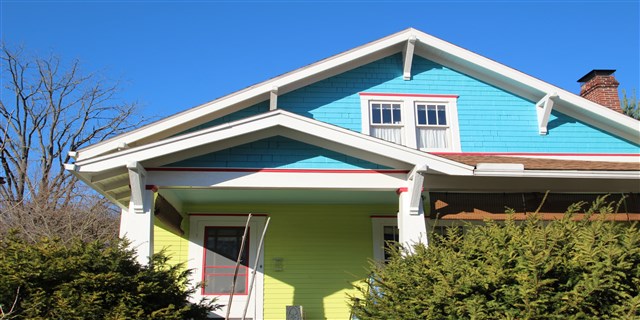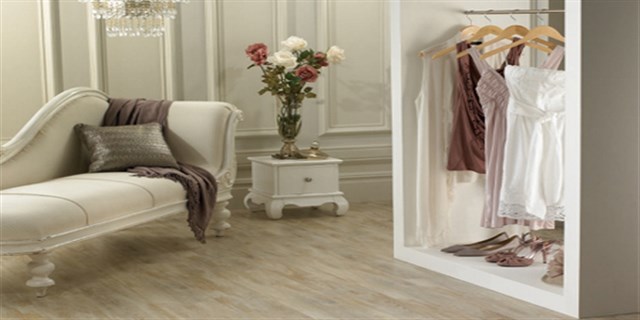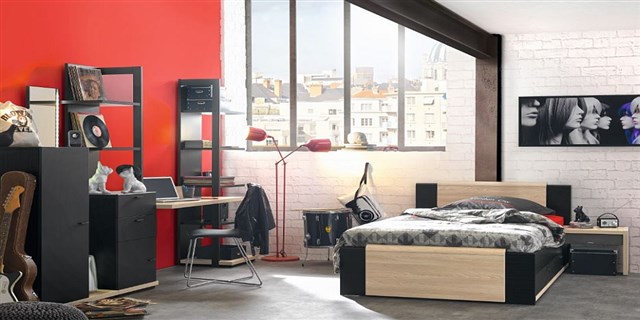As well as having a considerable decorative impact, paint effects can be fun to do. And, they allow you to experiment with different paint finishes. You can adopt various effects so that you can stamp your individuality upon your home. Here we will take a look at some effects and tips for your decorative projects;
Tools
Much of the equipment used for creating paint effects on walls can also be used for woodwork. Many tools can be used for multiple purposes. Meeting specific requirements with a tool such as a rocker will enable you to produce a highly individual wood effect. Also, don’t forget to include a variety of sizes of brush in your toolkit to cater to different surface areas and finishes.
Cleaning a rocker: Remove excess glaze from the tooling part of a rocker at regular intervals to prevent smudging. Creating knots Improve the texture of a wood finish by creating a few knots here and there. Do this by rolling the rocker tool backward and forward gently as you draw it across the glazed surface.
Mimicking Natural Wood Creating
The invention of a graining tool, or rocker, has revolutionized the creation of realistic wood effects using a glaze. The choice of colors is virtually unlimited, so you can select natural, authentic wood tones or base your effects on bolder, brighter colors.
Graining Wood
Choosing base colors Create a solid feel by using a light base color beneath a dark top coat. For greater depth and translucency, use a light top coat over a darker base.
Graining Kitchen Cupboard Doors
Take a cupboard door off, and lay it flat. Apply a base coat such as semigloss and allow it to dry. Apply a glaze evenly over the door using a 2-in (50-mm) brush.
While the glaze is wet, pull a rocker across the surface in vertical strokes to create a “grain.” Do not stop midway, since the glaze dries quickly and joins will show.
Coloring Wood
The simplest way of coloring wood is to color wash it, using a technique similar to the one applied to walls. Liming wax offers an alternative and provides greater texture and depth. As well as coloring the wood, both of these methods highlight the natural grain.
Using a wire brush:Stroke a wooden surface with a wire brush to open up the fiber that makes up the grain. This will allow the surface to absorb more liming wax. Brush the wood gently; otherwise, you might make indentations on the surface.
Applying Liming Wax
• Covering totally To ensure that liming wax gets into all the nooks and grooves on a wooden surface, use a circular brushing motion when you apply the wax. Use a fairly stiff-bristled brush, which will force the wax into these gaps.
• Removing excess Once you have applied liming wax, rub a clear wax over a wooden surface using a lint-free cloth. This will clean away any excess liming wax as well as provide a protective coating.
• Buffing Once a wax coating has dried, give the wooden surface a final buffing using a soft-bristled brush. A clean shoe-polishing brush is an ideal tool for this purpose.
Colorwashing
• Apply diluted paint or glaze to bare wood for a colored, grain-enhancing finish.
• Making a wash, For a simple wash, dilute ordinary flat latex with water until it has a milk-like consistency.
• Rubbing back Before a wash dries, rub the surface with a rag to remove excess paint and expose the grain, which will be highlighted.
• Rough-sawn washing Apply undiluted latex to rough-textured wood, allow to dry, then sand carefully with an electric sander. This will remove paint from the peaks but not the troughs, creating a color wash effect.
Dragging
Dragging is considered to be one of the more traditional paint effects, giving a wooden surface a textured look that tends to “lift” the finish, creating a realistic impression of depth. The technique is relatively simple, yet it can transform a flat wooden surface.
Creating the Effect
• Varying texture: Vary texture by adjusting the angle at which you drag a brush across a glazed surface. Having the bristles at a steep angle to the wood produces a fine texture, whereas a shallow angle makes strokes coarser.
• Using other tools: It is not essential to use a dragging brush, so experiment with other tools to vary the effect.
• Dividing areas: Treat different sections of a door or different lengths of molding, for example, as separate entities. It is important to drag continuously in the direction of the grain and to end strokes at junctions, joints, or natural divides.
Using a brush:Apply an even coat of glaze, then draw a brush slowly across the glazed surface at a constant speed and with the bristles parallel to the grain. Do not stop until you have dragged the whole extent. Mask adjacent areas if necessary.
Adapting a window scraper: Produce a dragged effect using a large car-window scraper. Cut out sections of the tough rubber blade, making a jagged edge. Use the scraper in the same way as a brush. Because of its size, it will be suitable for large areas.
Creating a Metallic Finish
Traditional painting materials can be used to create the impression of a metallic surface. There are products now available. However, that actually contains the metal that they are emulating. These materials produce a highly realistic metallic finish on a wooden surface.
Creating Verdigris
• Selecting a surface: If you want to create the impression of verdigris, choose a wooden surface that includes patterned moldings or other intricately shaped details. This will enable the surface to hold the colors more easily so that a good range of color shading can be obtained across the area.
• Choosing a subject: Consider creating a verdigris effect on an area or item that could well be made of metal, so that the deception is believable.
• Building up color: Use at least three shades of green as you build up a verdigris effect, the first verging on pale blue.
• Sponging on: Apply layers of color with a natural sponge, allowing one coat almost to dry before you apply another. Soften the sponged effect with a crumpled rag. This will expose the base coat in some places, adding authenticity.
Establishing Color: Painting a base color To increase the realism of a verdigris effect, choose a bronze- or copper-colored paint for the base color.
Faking Metals
• Leading: Apply a base coat of iron-oxide paint, then highlight the surface edges with black and dark gray spray- paints. Spray a fine mist rather than covering the edges totally.
• Choosing a hammered finish: Use a commercial paint intended to give a textured, hammered effect on exterior metalwork to create a similar finish on interior woodwork.
• Enameling: Enamel paints mimic real metal effectively. Apply them to moldings or doors to add detail.
• Using car paints: Many cars have a metallic finish. Use touch-up spray paint in an appropriate color to create metal effects on inside surfaces. Wear a mask when spraying.
Decorating Woodwork
There are many ways of producing a fake marble finish, largely because of die fact that the surface of natural marble varies greatly, depending on the type. Your main aim should be to reproduce the cloudy integration of different colors that are common to all marbles.
Marbling Panels Using a Rag
• Having let a base coat dry, randomly cover each panel with two colors of glaze. Apply the second color before the first is dry; it does not matter if the colors run since this will add to the effect.
• Holding a damp, lint-free rag by one corner, flick it onto the glazed surface, thus mixing the colors. Work diagonally over each panel. Remove excess glaze from panel edges with a dry cloth.
Increasing Realism
• Veining: Apply slightly diluted burnt umber with a fine-tipped artist’s brush to suggest the veins characteristic of marble. Use a photograph or piece of marble as a guide. Drag the brush lightly in the same direction each time. Softening Soften a surface before the glaze dries. If you do not have a softening brush, gently use a soft dusting brush to blur the hard edges of “veins” or the base colors.
• Protecting: Apply several protective coats of varnish to the finished product. A satin or semi-gloss varnish will create the most realistic finish.
• Combing: Combing is similar to dragging or graining. Except it offers greater diversity. You do not need to apply a combed pattern in the same direction as the wood grain. You will find that the creation of extravagant patterns is a very satisfying part of the combing technique.
Combing Effectively
• Preparing surfaces: Combed designs look most effective when glaze lines are smooth. Prepare surfaces well so that they are perfectly level and free from depressions and lumps that would interfere with the comb’s movement.
• Choosing tools: Although you can buy specifically designed combing tools to create this effect, experiment with a notched grout spreader or traditional hair combs to introduce variety to the finish.
• Creating combed designs: Choose from a number of designs created by combing. Basketweave designs, circles, or combinations of patterns, and images such as scrolls and lettering all look very effective.
Creating Patterns on a Paneled Door
Decorate a paneled door in sections. Glaze and comb the horizontal rails first, then the vertical rails. The combing tool will make the rails look grained, in contrast with the door panels. Now apply glaze to the panels. Keep the combed pattern symmetrical by maintaining a constant hand motion. After each combing movement, remove the excess glaze from the comb’s teeth.




